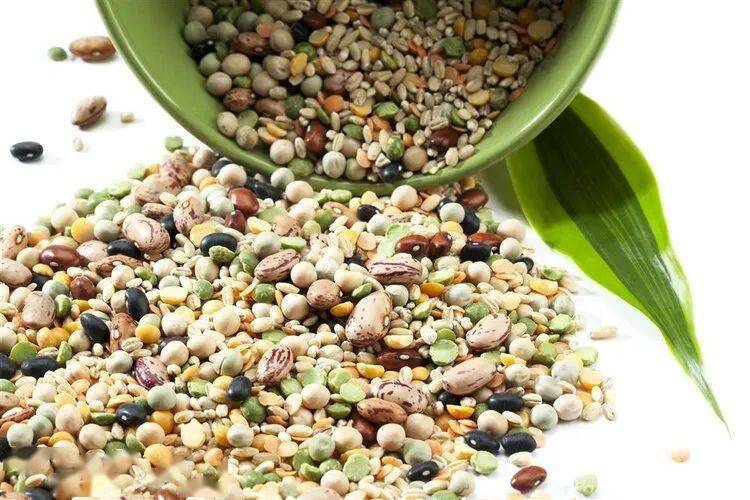Losing weight without eating staple foods is a big no no! What will happen to your body if you eat only vegetables and no rice for a long time?

I believe that many women who love beauty know that losing weight without eating staples will affect their periods and lead to menstrual disorders and even menopause! Losing weight without eating staple foods is a big no-no! Therefore, many of our friends are looking for lower calorie, healthier staple foods to replace rice. Follow me to see what quality carbohydrates are available I. What happens to your body if you eat only vegetables and no rice?
A study was published in The Lancet Public Health in which researchers analysed data from 150,000 adults aged 45 to 64 in the United States and 430,000 in European and Asian countries and found a U-shaped association between total carbohydrate intake and life expectancy.
Either <40% or >70% carbohydrate intake of total energy consumed throughout the day led to an increased risk of death, while subjects with a daily carbohydrate intake of 50-55% had the lowest risk of death. In other words, one should not eat less or more of the staple food.
Prolonged periods of eating only vegetables without food may target you with these ailments.
01Muscle loss The carbohydrates within staple foods are the main substance for energy supply, and a prolonged lack of intake will prevent the body from consuming sufficient protein, which in turn tends to lead to increased muscle loss. Not eating staple foods will cause your body to use protein for energy, which will further lead to muscle loss.
02 Bad Breath Inadequate carbohydrate intake in the diet requires the body to consume fat and protein for energy. Incomplete metabolism of fat produces ketones, which in turn produce the smell of rotten, fermented fruit and a distinct odour in the mouth. Protein breakdown, on the other hand, tends to produce ammonia, which also has a noticeable odour.
03 Brain decline Insufficient intake of staple foods will prevent the body from consuming sufficient glucose, which will affect the brain’s thinking activity and lead to problems such as poor concentration, lack of energy and sluggish thinking.
04.Fatty liver.
Eating only vegetables and not eating staple foods for a long period of time will put a heavy burden on the liver, which will easily lead to lipid peroxidation in the body and damage liver cells, leading to the development of fatty liver.
05.Ketoacidosis.
Many diabetic patients do not eat staple foods in order to control their blood sugar. Not eating staple foods for a long period of time can easily lead to hypoglycaemia, and may also cause symptoms of ketoacidosis such as nausea, headache, weakness and drowsiness.
But in recent years, the controversial nature of staple foods has been very controversial, there are many rumors that rice and porridge are very poor staple foods, which are not good for health, is this true?
Second, rice and porridge are the worst staple foods? Don’t be misled again.
1. Can rice induce diabetes?
The occurrence of diabetes is not only related to a diet high in sugar and fat, but also to genetics and external environmental factors, so the cause of diabetes cannot be blamed entirely on eating rice.
2. Is porridge not nutritious?
The nutritional content of white porridge is very single, basically it only provides energy and water, and the content of protein, dietary fibre, vitamins and other nutrients is very low. White porridge is also very soft, so it can be digested very quickly after eating, which can easily lead to a rise in blood sugar. However, porridge can also be made nutritious if foods such as mixed grains, vegetables and meat are added when cooking it.
Staple foods are essential in the daily diet and these healthy ingredients can be added appropriately when choosing.
Three, healthy staple food recommendations for reference.
1、Brown rice.
Brown rice is only dehulled during processing. Compared to white rice, it retains the seed coat and embryo, and is a little rougher in taste. It is rich in vitamins, minerals and dietary fibre, which helps to control blood sugar after meals and is suitable for people with weight loss and diabetes.
2、Sweet potatoes.
Sweet potatoes are rich in dietary fibre, in the intestinal tract can impede the absorption of sugar and fat, for the control of blood sugar is helpful.
3, buckwheat.
Buckwheat is high in dietary fibre content, about 13.3g/100g, and also contains quercetin, rutin and other ingredients, can help regulate blood sugar after meals.
3, oats.
Oats within the dietary fibre content is very rich, and also contains beta-glucan composition, into the body after digestion is very slow, can produce a strong sense of satiety.
Daily staple food is not recommended to eat only coarse grains or only fine grains, but should be to do with coarse and fine. Our dietary guidelines recommend a daily intake of 250-400g of staple foods, with a ratio of 1:3 between coarse and fine grains, which means a daily intake of at least 50g of coarse grains. The combination of coarse and fine grains allows the body to consume different nutritional elements and generally improves the nutritional value of staple foods. It does not overload the gastrointestinal tract and is especially suitable for healthy adults and patients with three highs.



